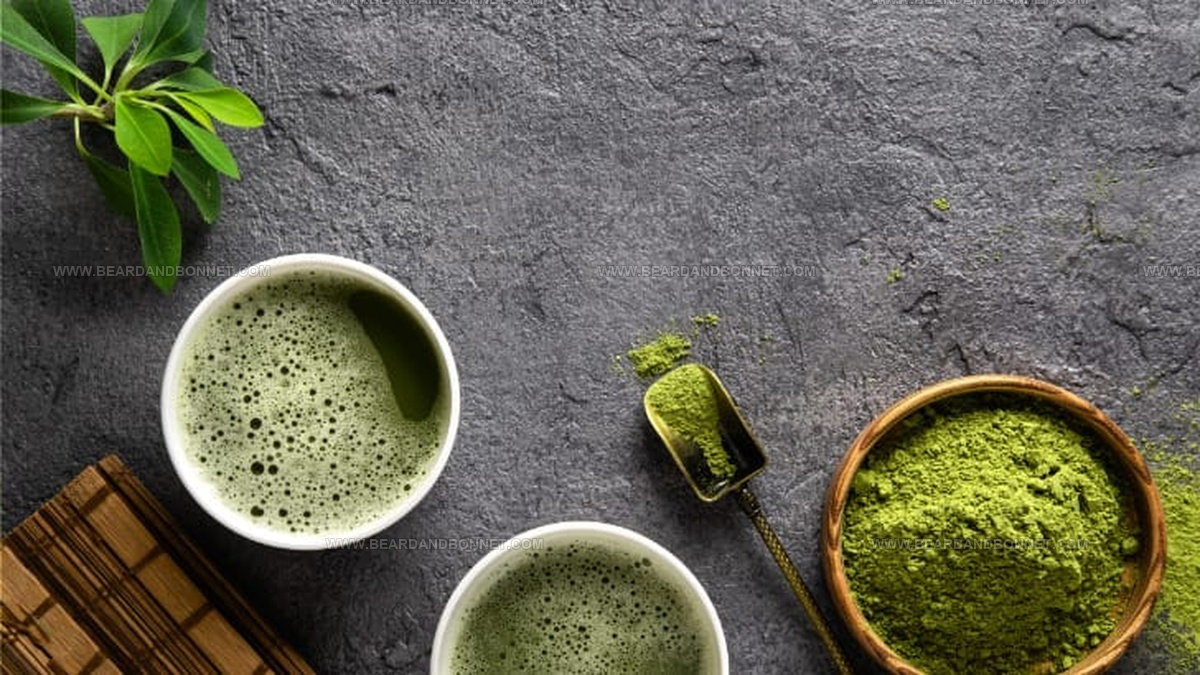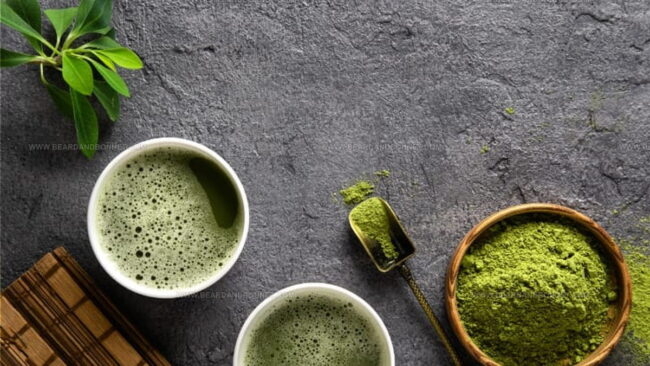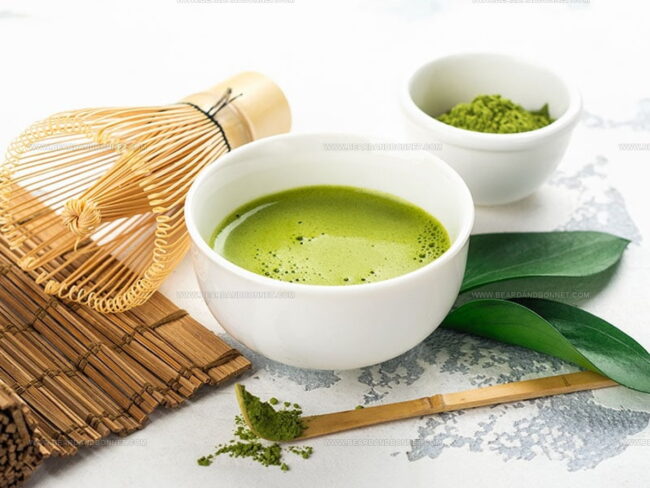What Does Matcha Taste Like? A Beginner’s Guide to This Green Tea Gem
Matcha, a vibrant green powdered tea, has captivated taste buds worldwide with its unique flavor profile and rich cultural heritage.
Japanese tea ceremonies have celebrated this extraordinary beverage for centuries, transforming it from a traditional drink to a global culinary sensation.
Health enthusiasts and food lovers alike find themselves intrigued by its distinctive characteristics and potential benefits.
This powdery green marvel offers more than just a simple beverage experience - it represents a complex sensory journey that challenges conventional tea expectations.
Curious individuals often wonder about the nuanced taste that makes matcha so special and different from other teas.
Cultural traditions and modern culinary trends have elevated matcha from a niche ingredient to a mainstream phenomenon that sparks widespread intrigue.
Let's unravel the sensory mystery behind this remarkable tea and understand what makes its flavor so compelling.
What Is Matcha?
Matcha starts as a special green tea made by crushing young tea leaves into powder.
Brewers mix this powder with hot water.
Regular green tea works differently, where leaves steep in water before being taken out.
Tea plants growing matcha sit under shade.
Blocked sunlight increases chlorophyll, creating deep green leaves packed with nutrients.
Workers carefully select leaves, removing stems and veins.
Traditional methods involve grinding leaves with granite stones.
Grinding takes one full hour and happens in darkness to keep nutrients intact.
Tea expert Louise Cheadle explains drinking regular green tea is similar to boiling spinach and drinking only the water.
Most nutrients remain behind.
Matcha lets you drink whole tea leaves, ensuring maximum health benefits.
Taste of Matcha
Matcha carries a rich and intricate flavor with these key characteristics:
Matcha's specific flavor changes based on leaf quality, growth conditions, and brewing method. Better quality matcha tends to have smoother, more complex, and less sharp taste profiles.
Superb matcha contains zero bitter notes. Instead, it offers a mild sweet sensation.
Starbucks matcha powder includes additional sweeteners and differs slightly from traditional versions.
How to Improve Matcha Taste
If you want to make your matcha taste better, start with fresh, high-quality powder for the best flavor.
Mix your matcha with water that isn’t too hot, about 175°F is just right.
Whisk well to remove lumps and create a creamy foam.
You can add a splash of milk or a bit of honey if you prefer a smoother or sweeter drink.
Try blending your matcha with other flavors like vanilla or a pinch of cinnamon to make it even more enjoyable.
How to Make Matcha
Green tea powder blends smoothly with hot water, creating a foamy drink meant for slow sipping.
Japanese culture treasures this special beverage.
Many coffee shops now serve matcha mixed with warm steamed milk, which works well as a morning drink similar to a regular coffee.
Matcha latte carries a complex flavor profile with deep earthy qualities, grassy green vegetable hints, pleasant nutty sweetness, and mild bitter notes.
Cooks can stir matcha powder into plain water or blend it into smoothies.
Another option includes using it within recipe preparations, such as making simple matcha mochi.
Health Benefits of Matcha
Matcha shares health perks similar to green tea. Some experts believe consuming unsweetened matcha might offer more benefits than drinking green tea.
Matcha uses ground whole tea leaves, while typical tea involves brewing leaves in water.
Matcha health advantages include:
Keep in mind matcha supports health but doesn't work like a miracle solution. Benefits can differ between individuals.
Caffeine content might not suit everyone, so consulting a doctor before major diet changes remains wise.
Does Matcha Have Lead?
Green tea might sound scary when linked to lead contamination. Dr.
Tod Cooperman from ConsumerLab.com says matcha or green tea sold in the United States doesn't create health risks.
ConsumerLab's tests showed something interesting about lead in green tea.
When lead exists in tea bag leaves, water does not absorb it. Cooperman and his research team checked six popular matcha brands:
These brands passed their tests without lead or metal contamination.
Pesticides were also absent from these samples.
Although ConsumerLab did not test every single brand, their research suggests premium tea brands remain clean and safe.
Are There Any Downsides to Matcha?
Green tea and matcha carry health benefits while remaining safe for most people.
Individuals sensitive to caffeine should watch their intake since both drinks pack stimulant punch.
Research from world health experts in 2016 suggested hot drink consumption might link to esophageal cancer risks.
Compared to serious cancer threats like smoking, these beverage-related risks seem quite minimal.
How to Store Matcha Tea
Success with matcha depends on smart storage methods. Matcha powder stays fresh for about four weeks after opening its package.
Freezer storage works well when you won't use matcha right away. Keeping it cold helps preserve its delicate qualities.
Opened packages need careful handling. Seal the package tightly and place it in your refrigerator.
Remember to let matcha warm to room temperature before brewing. Cold temperatures can change its taste.
Cupboard storage remains an option for some people. Humidity and temperature matter most when selecting storage spaces.
Key storage guidelines include:
Careful storage helps matcha maintain its rich flavor, beautiful green color, and wonderful scent. Small steps make big differences in keeping this special powder at its best.
Does Matcha Expire?
Matcha keeps its quality for a long time compared to many other food items.
Green tea powder stays safe to use, but its taste and good qualities fade as months pass.
Color changes might signal that the powder is losing its original strength and flavor.
Best practice involves using matcha powder within six months of buying it.
Getting Great Flavor from Matcha
Matcha offers unique flavors that take some getting used to.
Your first sip might not be love at first taste.
Start by trying several brands and adding a small touch of sweetness.
With patience, you could find a mix that makes you smile.
Enjoying a healthy drink has its own reward.




Jessica Martin
Recipe Developer & Food Writer
Expertise
Recipe Development, Food Styling and Photography, Seasonal and Local Ingredients, Vegetarian and Vegan Cuisine, Culinary Education
Education
Portland Community College
Oregon Culinary Institute
Jessica Martin is a talented food writer and recipe creator who specializes in seasonal cooking and approachable home baking.
Educated at Portland Community College with additional pastry training from Oregon Culinary Institute, Jessica’s culinary journey spans nearly a decade of creating and sharing flavorful recipes.
Her deep appreciation for local ingredients shapes each of her recipes, making them both accessible and inspiring. At Beard and Bonnet, Jessica uses her cheerful, down-to-earth writing to help readers effortlessly bring new tastes and creative dishes into their daily routines.